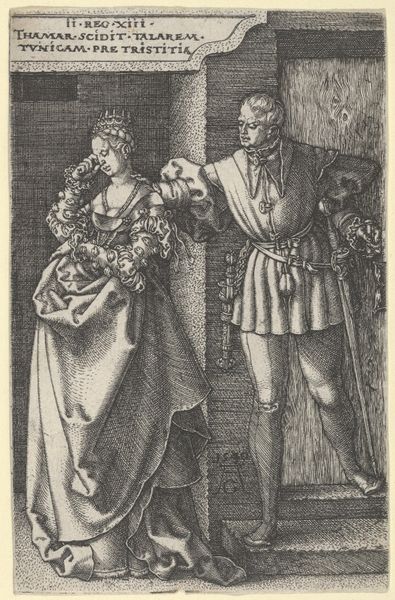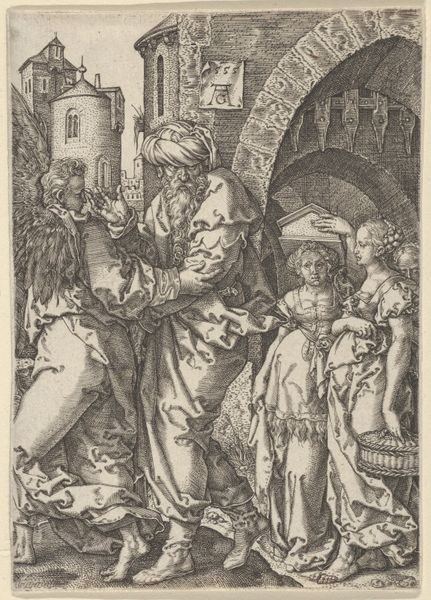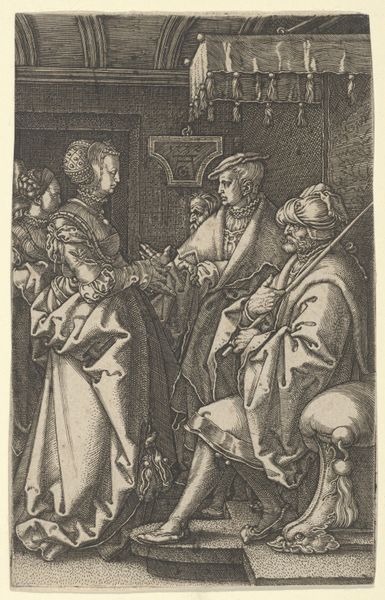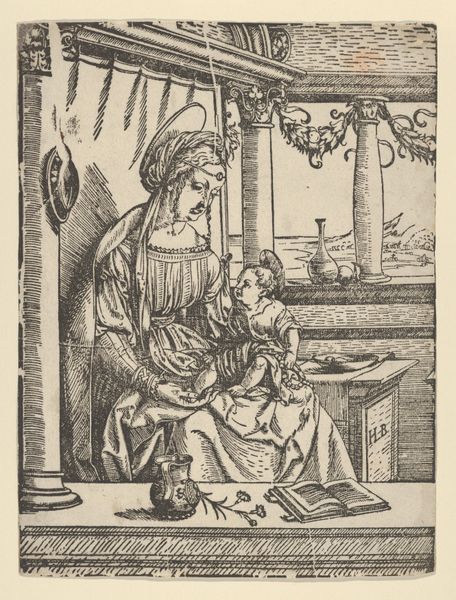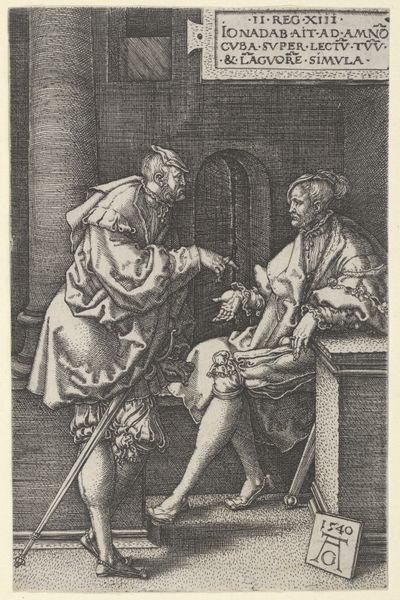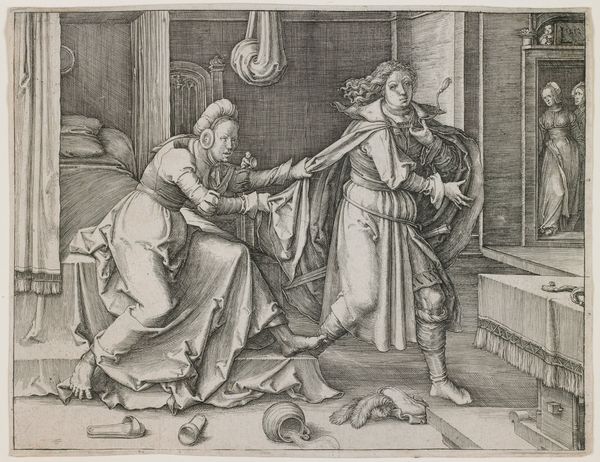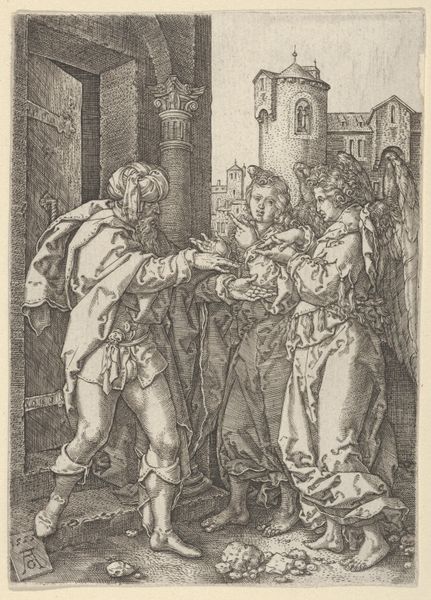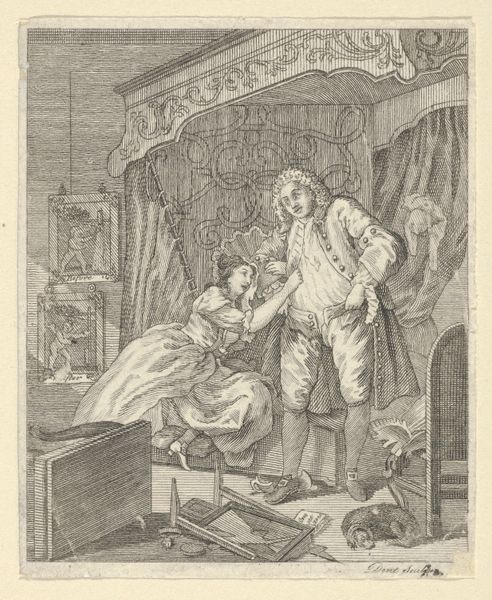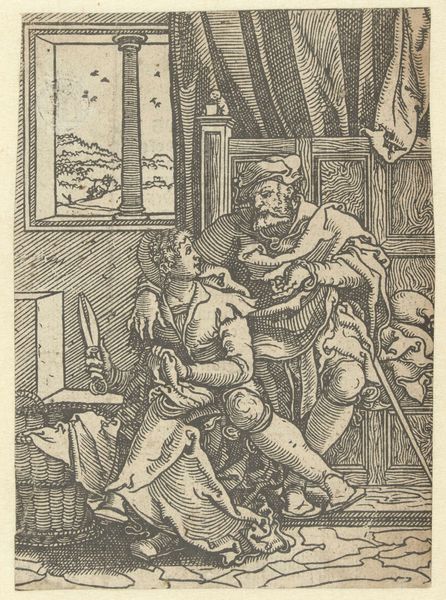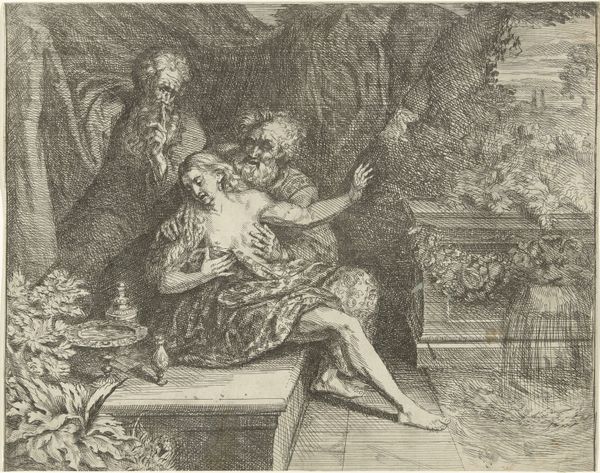
Amnon Violating Tamar, from "The Story of Amnon and Tamar" 1540
0:00
0:00
drawing, print, engraving
#
drawing
#
narrative-art
# print
#
figuration
#
11_renaissance
#
history-painting
#
northern-renaissance
#
engraving
Dimensions: Sheet: 4 11/16 × 3 1/16 in. (11.9 × 7.8 cm)
Copyright: Public Domain
Curator: What strikes you first about this harrowing scene, created by Heinrich Aldegrever around 1540? Editor: Honestly, the violence is palpable even in this small print. The woman's forced pose and expression communicate so much trauma, highlighting the power dynamics at play. It is profoundly disturbing. Curator: It’s important to remember we are looking at Amnon Violating Tamar from "The Story of Amnon and Tamar." As a print made with engraving techniques, it renders a very stark reality of the biblical narrative. Notice the claustrophobic architecture that surrounds them and how it boxes them within the scene. What symbols do you make of that visual pressure? Editor: I see it reflecting the patriarchal structures trapping Tamar. The space isn't just a room; it’s symbolic of the limited agency afforded to women, particularly in this historical context, and her isolation exacerbates her vulnerability to exploitation and silencing. We are very close to a kind of 'Me Too' allegory. Curator: Yes, the inscription “Amnon VI Oppressit Thamar” clarifies its purpose to me. I interpret Aldegrever as using well-understood religious iconography to offer contemporary cultural lessons to a 16th-century audience. Do you get that message too? Editor: Absolutely. He’s repurposing a well-known biblical story to comment on contemporary issues of sexual violence and power imbalances. Consider also the male gaze; it persists from Amnon's physical assault to the implied viewer who is invited into this private moment of violation. The cultural weight on the depiction of assault persists in the visual record across centuries. Curator: The lasting echoes in art history are hard to deny, reflecting the historical treatment of women as property. In thinking about this piece and in an attempt to consider a fuller view, one also has to remember that artists are a product of their time, often incorporating prevalent attitudes and perspectives from within their worlds. What lessons about this cultural frame do you take from it? Editor: It prompts necessary conversations about complicity, representation, and how art can either challenge or reinforce harmful social norms. Ultimately, what Amnon Violating Tamar presents is a timeless mirror reflecting difficult truths about power, gender, and the urgent need for societal change. It reminds us the battle against exploitation continues today.
Comments
No comments
Be the first to comment and join the conversation on the ultimate creative platform.
